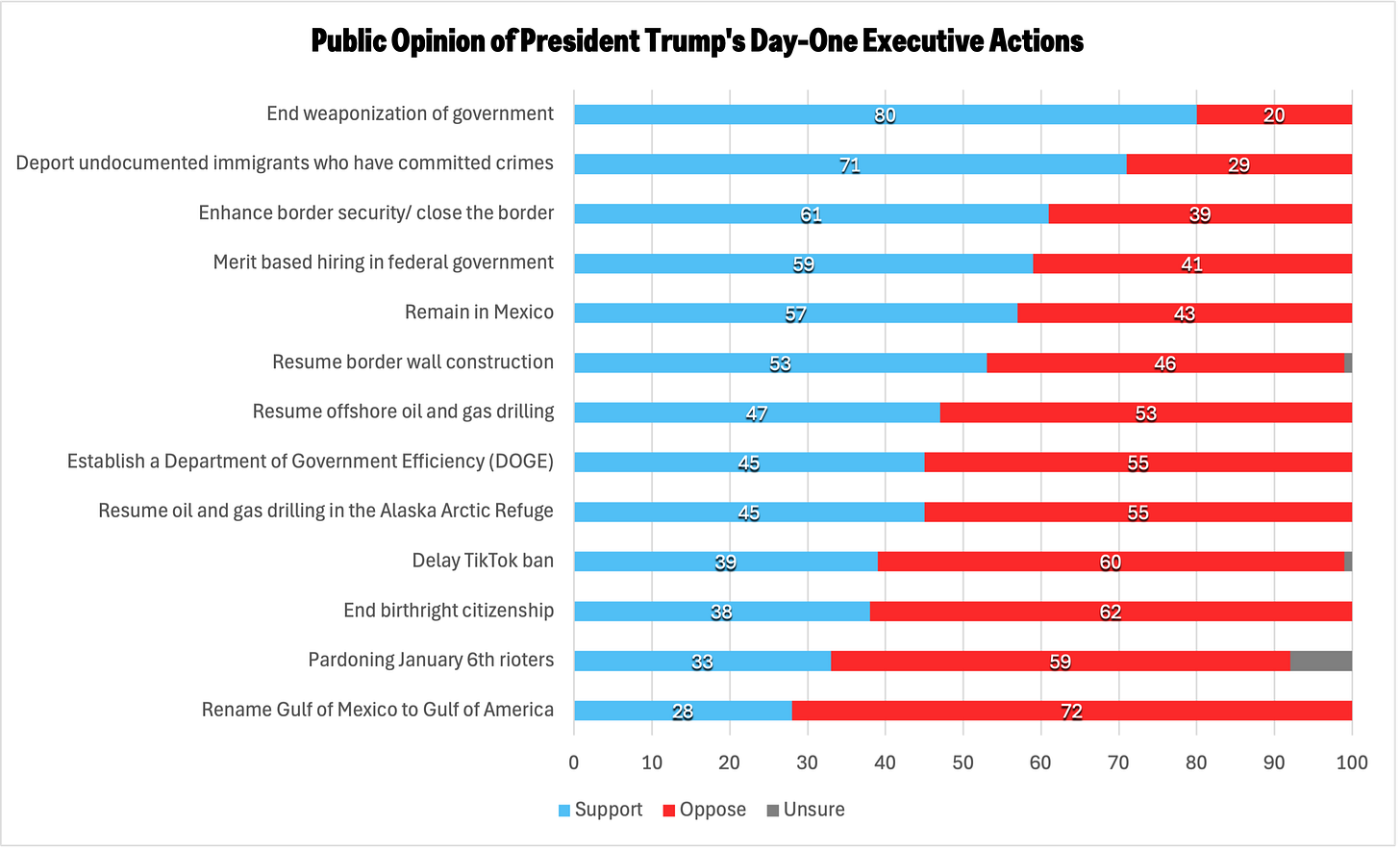President Trump wasted no time on his first day back in the Oval Office.
On stage at a rally in Washington’s Capital One Arena, and later in a smaller ceremony at the White House, the new President signed a total of 26 executive orders Monday night.
This is a breakneck pace. Here is how President Trump’s inaugural actions compare to recent presidents’ first days in office:
In fact, according to No Labels’ analysis of Federal Register data, 26 is the most executive orders signed in one day on record (going back to at least 1937).
Executive orders are written directives that have the force of law and require no input from Congress or anyone other than the president. But they go just as easily as they come: President Trump overturned nearly half of President Biden’s executive orders with just one stroke of the pen on inauguration day.
The No Labels policy team recently did a deep dive into executive actions, their history, and their pros and cons. You can find it here:
President Trump’s flurry of executive orders covered a broad range of topics, including:
Securing the border and reforming the asylum system
Boosting oil and gas production
Withdrawing from the World Health Organization
Federal hiring freeze and regulation freeze
Eliminating Diversity, Equity and Inclusion (DEI) initiatives across the federal government
Renaming the Gulf of Mexico
Partisans on both sides of the aisle will likely paint the whole suite of orders as either a disaster or a lifesaver. But it helps to remember that most Americans have more nuanced views. They often form opinions on an issue-by-issue basis instead of following what any “side” supports. The chart below proves it.
This chart shows what percentage of Americans support or oppose actions that President Trump took yesterday:1
What we found is that Americans hold a wide range of opinions on the steps President Trump took yesterday. In some instances, over 80 percent of the country agrees with him; and in other cases, less than 30 percent do. The same could probably be said for the rest of his legislative agenda.
This means that Americans mostly do not want “resistance Democrats” or “rubber-stamp Republicans” in Congress who automatically oppose or support anything President Trump does. Instead, they want leaders to deliberate, negotiate, and work together to find commonsense solutions to our biggest problems.
The chart only shows actions for which No Labels was able to find reliable public opinion polling published within the last year. If an issue was polled long ago or only polled by special interest groups, we did not include it. Most numbers come from the Harvard Harris poll, but we also cited the Axios Harris poll, CBS News, Gallup, and Quinnipiac to fill in the gaps.






Lawsuits were already lined up to be filed before the first Trump EO was signed. And so it will go with many. It would be interesting to have the statistics on the percentage of EO’s in the past say dozen administrations that were challenged in court, and of those, how many survived past the first injunction and final court ruling. Of course some EO’s aren’t worth the trouble challenging but we already see some big battles ahead of us. More confusion and paralysis and waste of valuable resources.